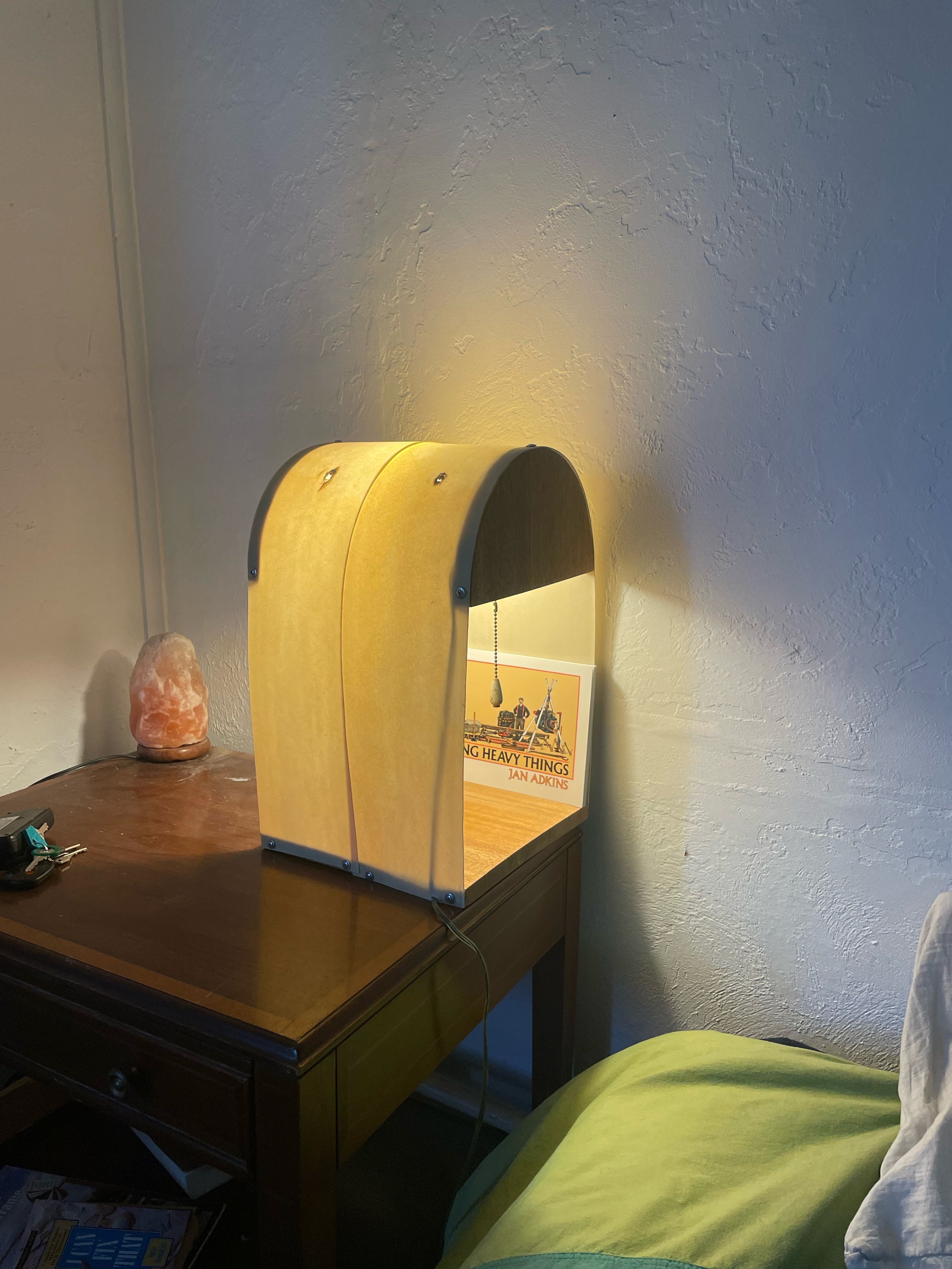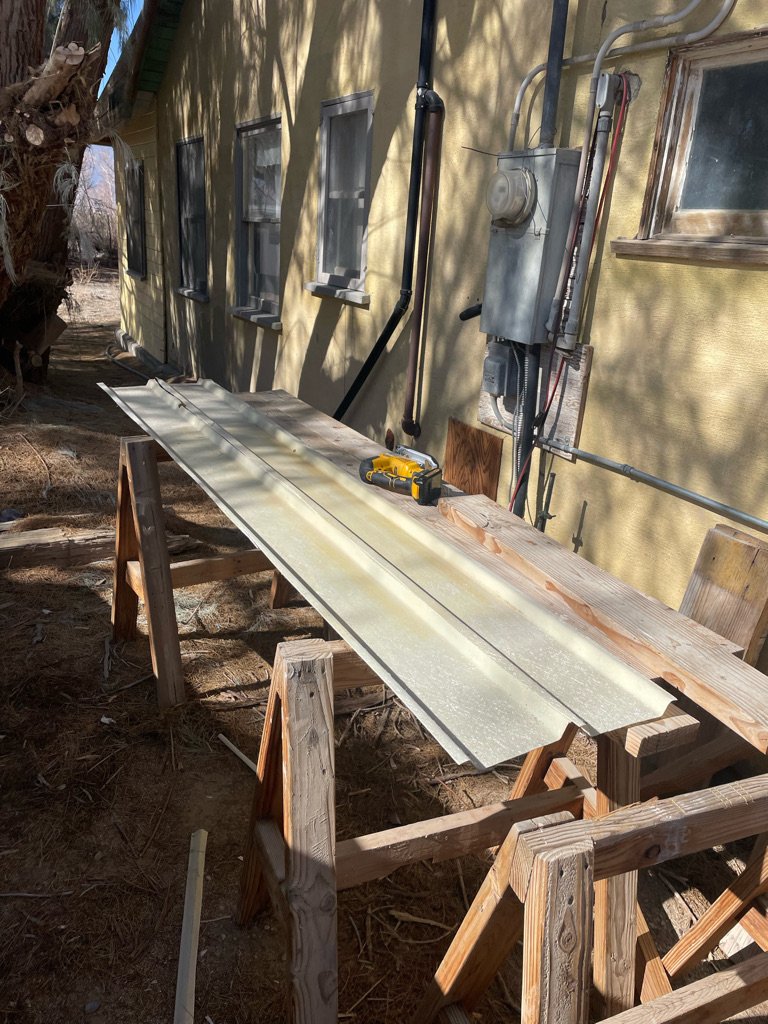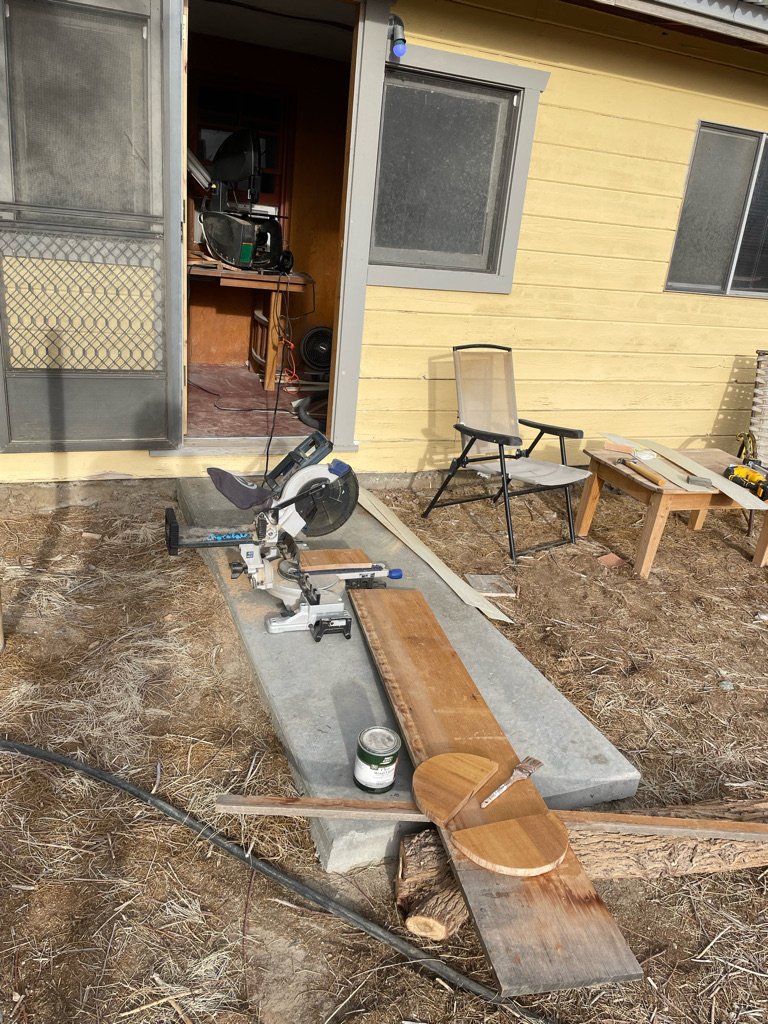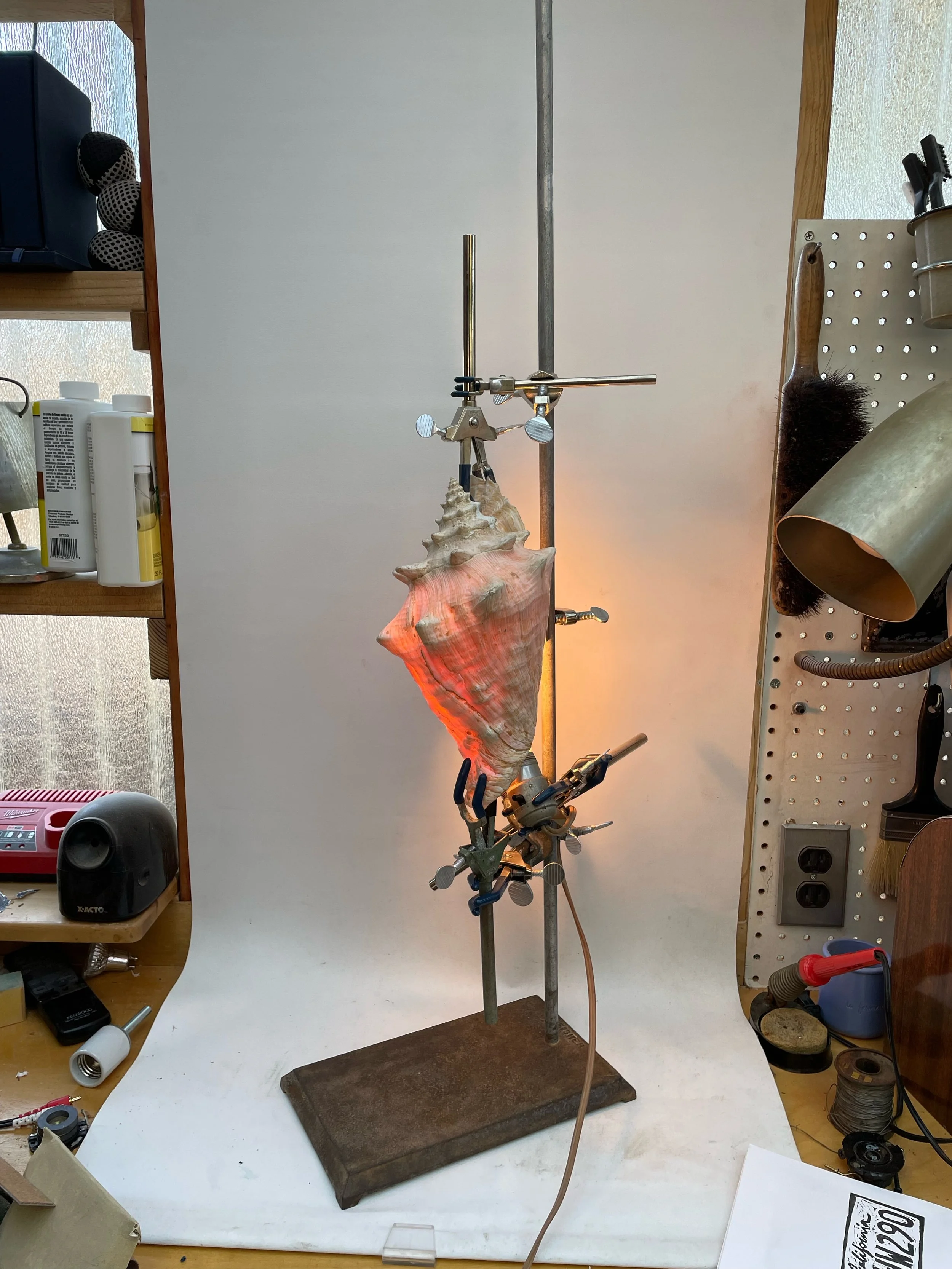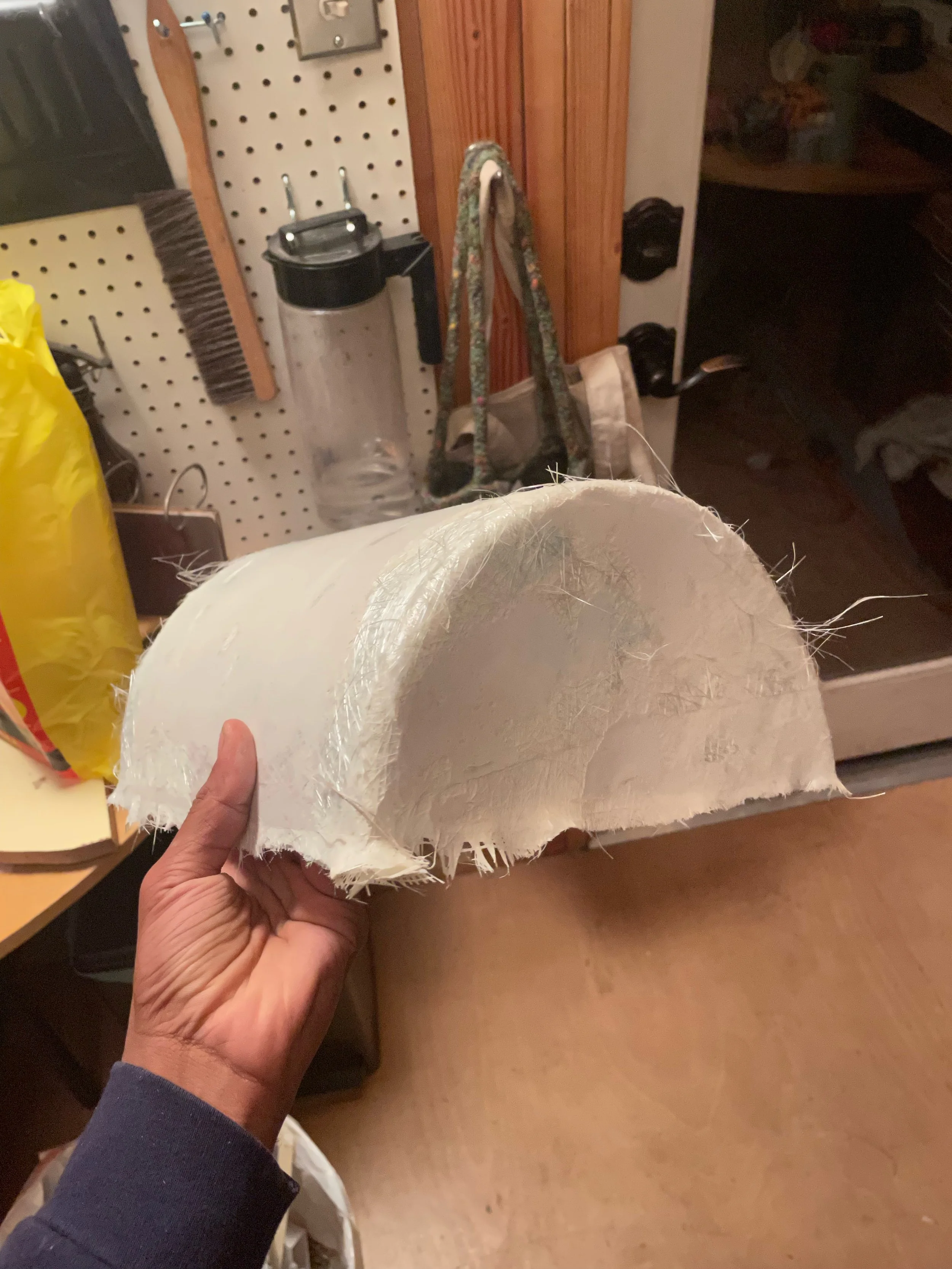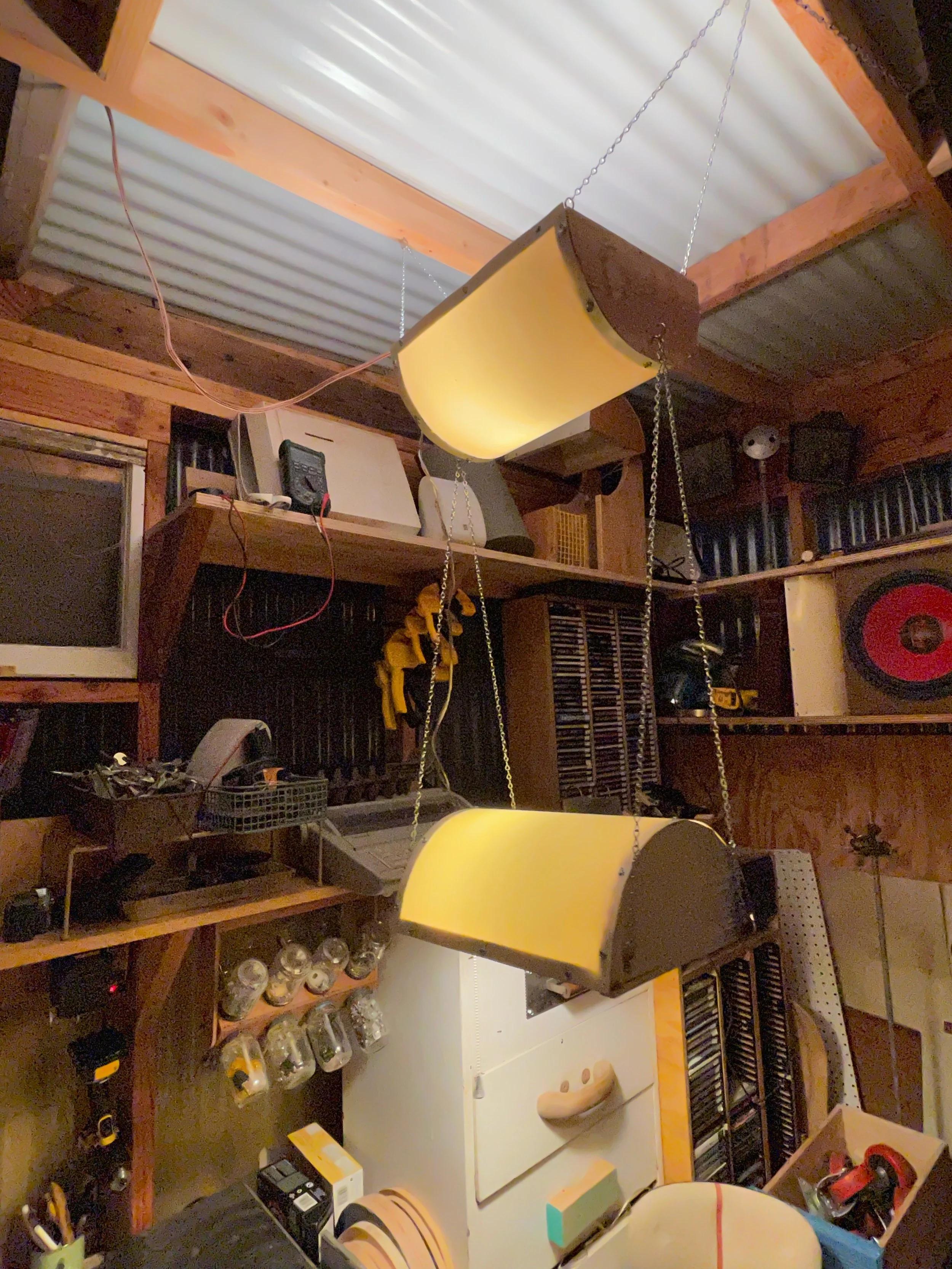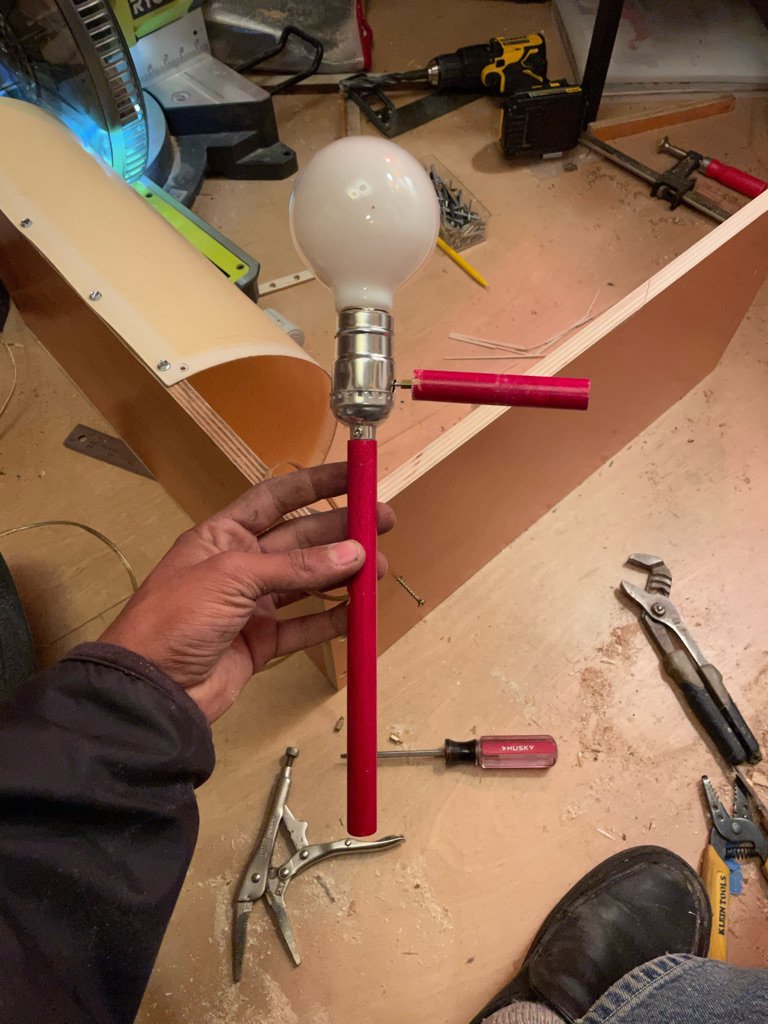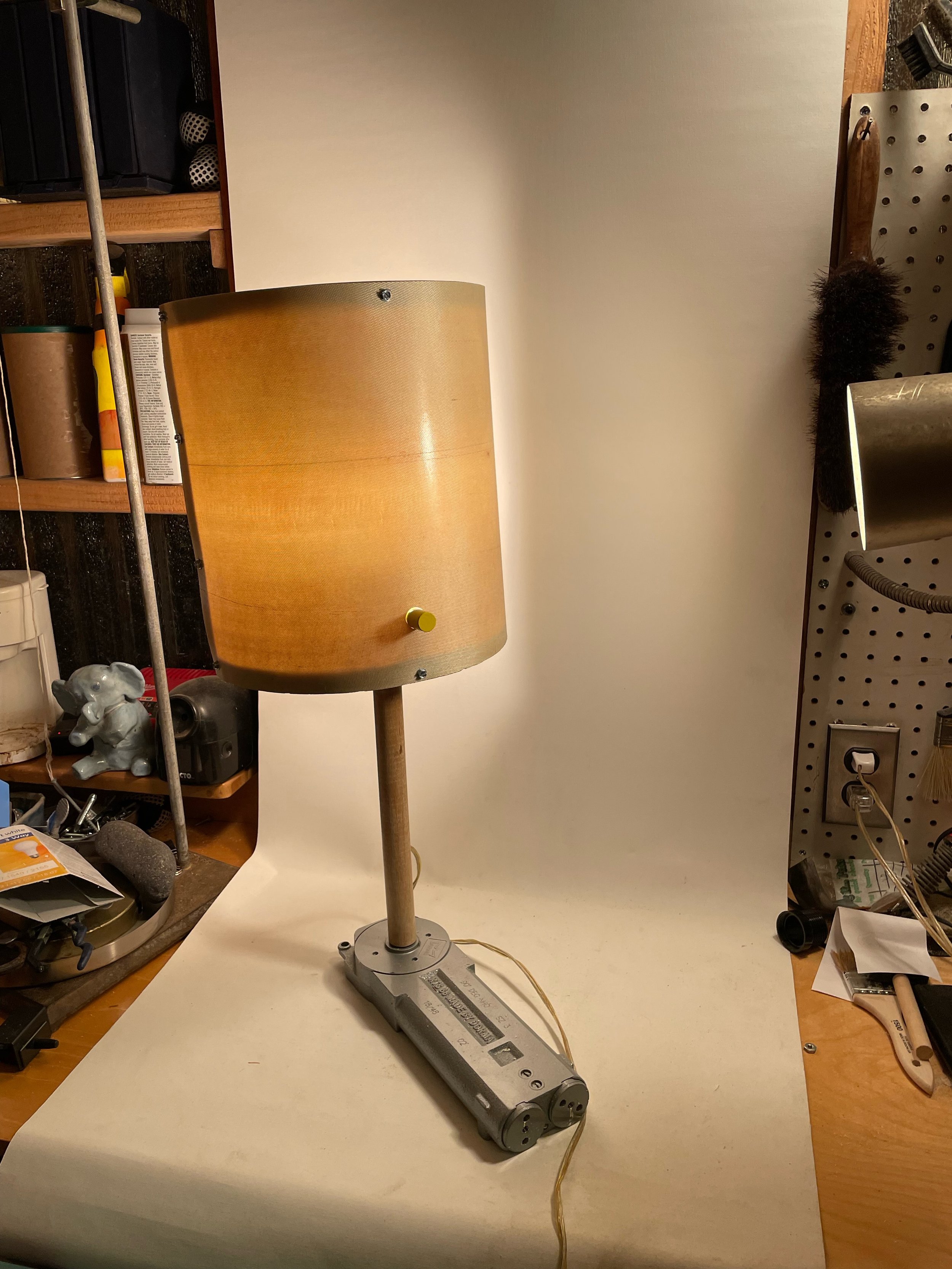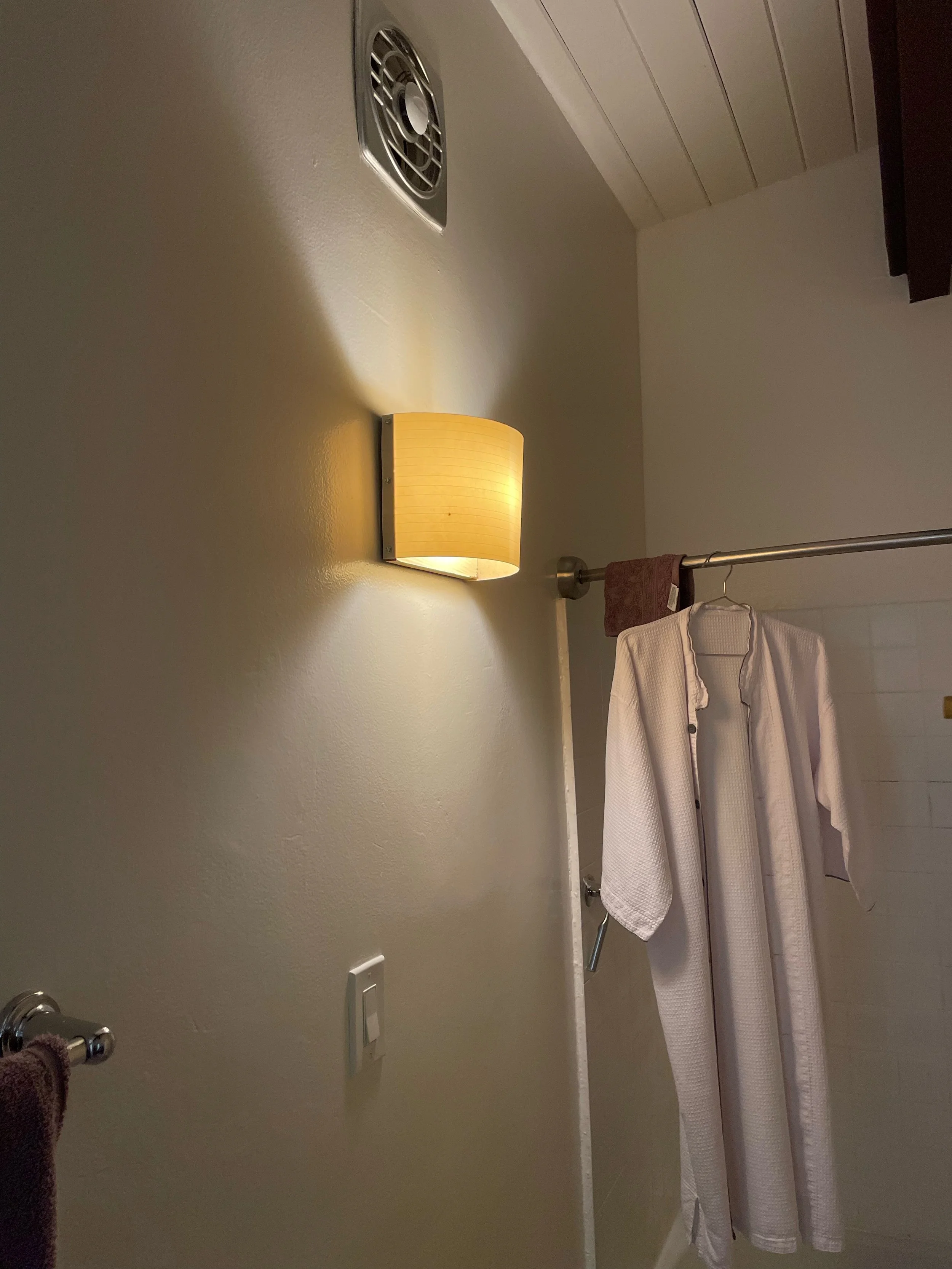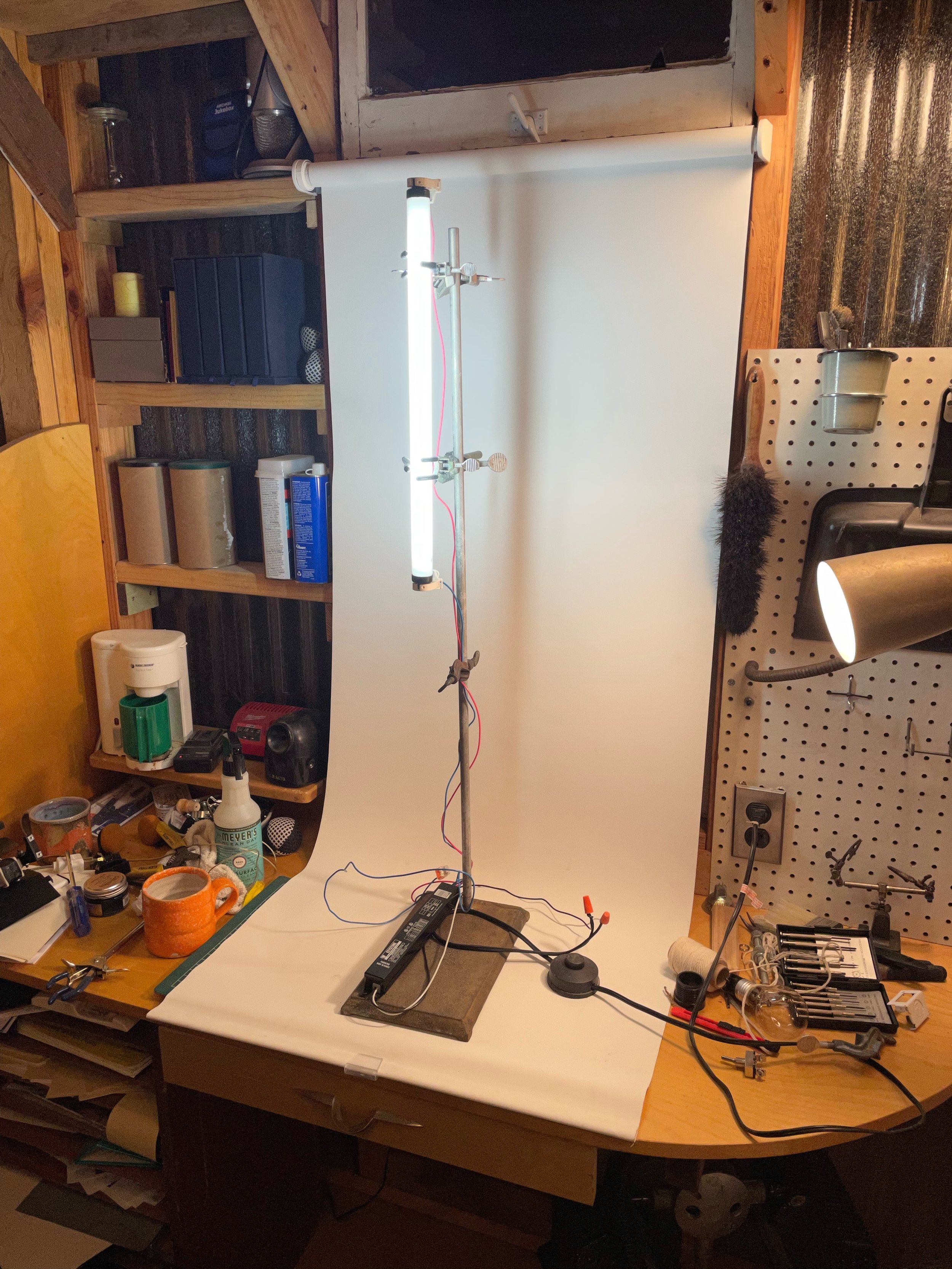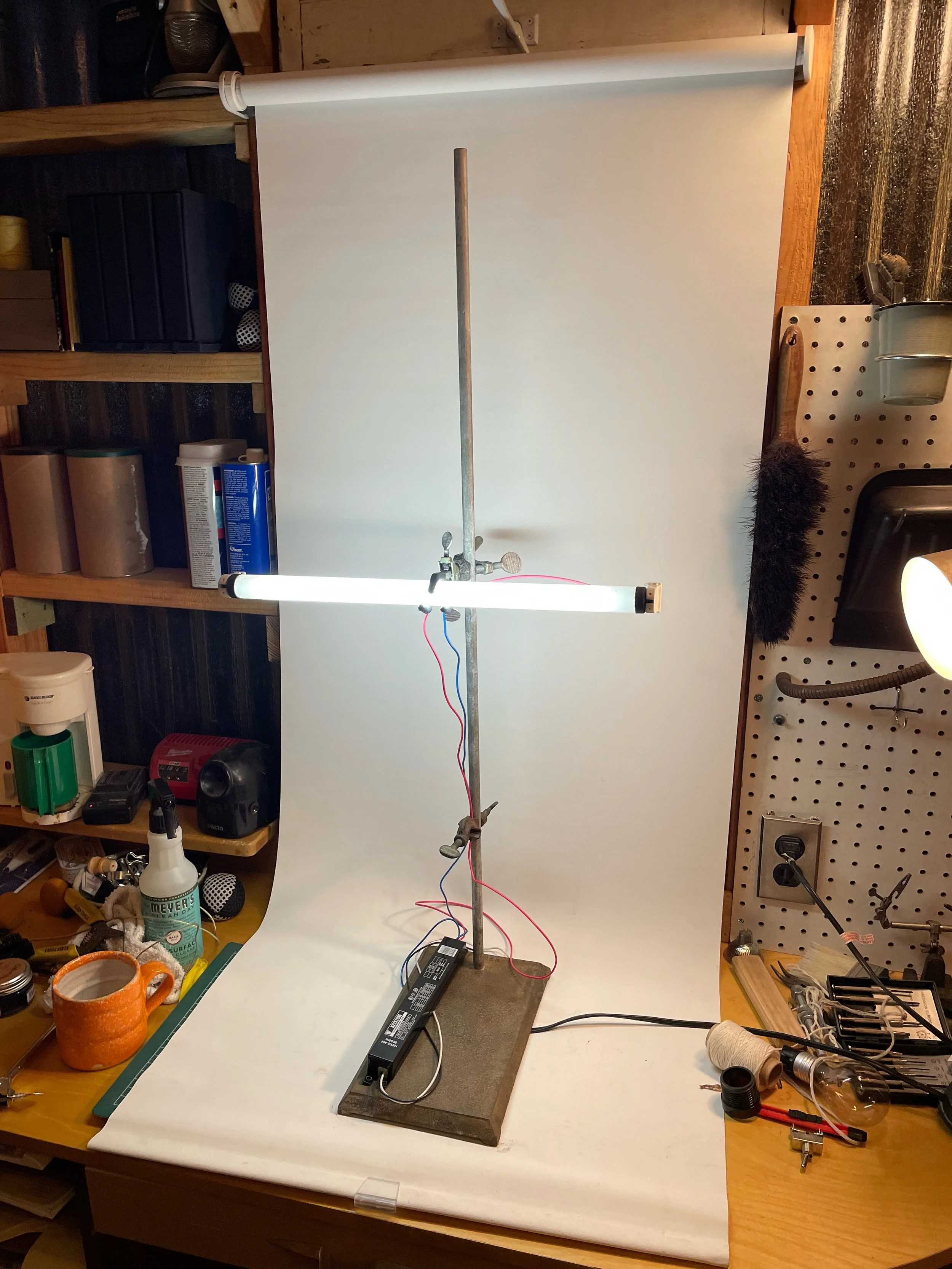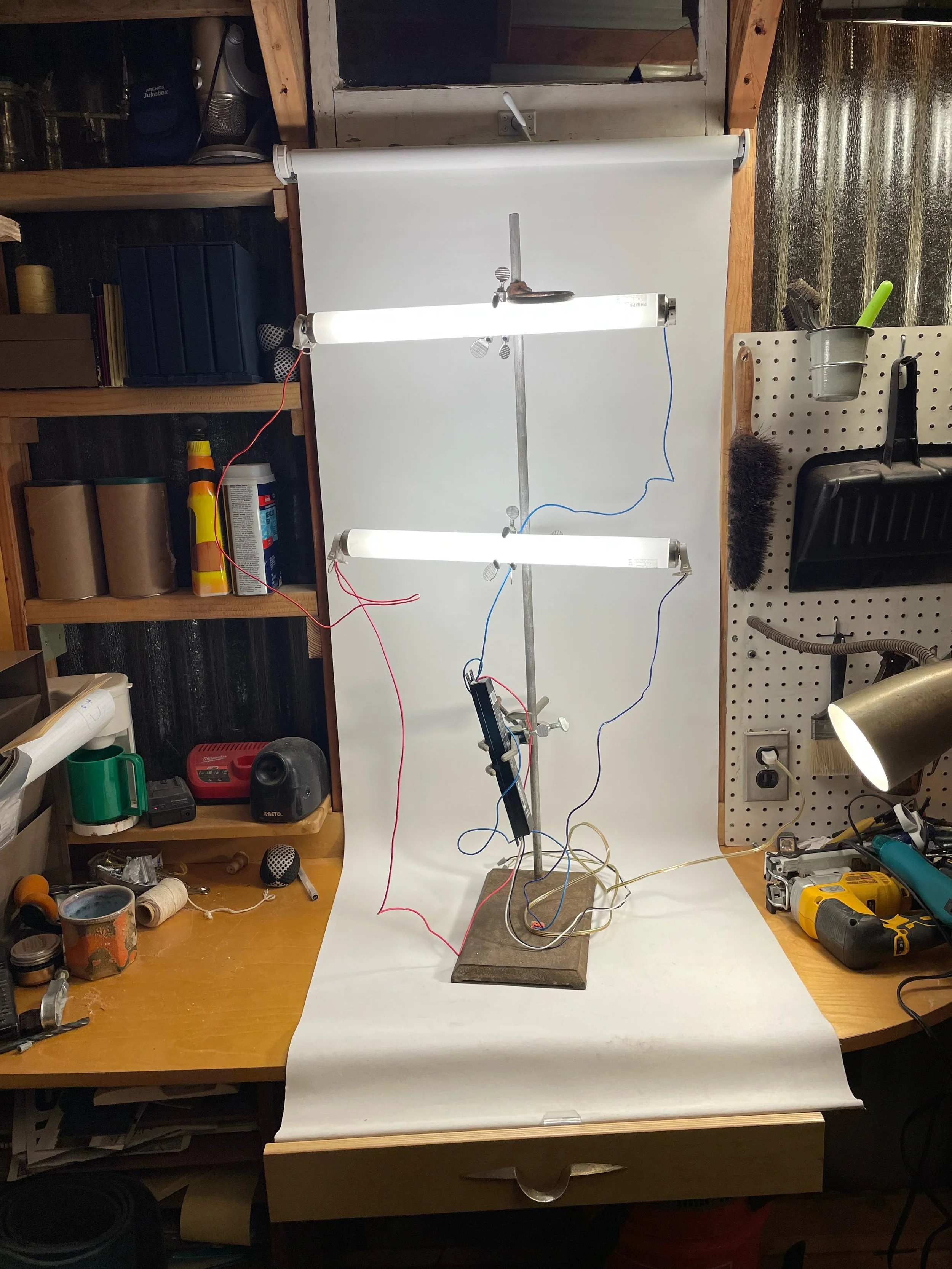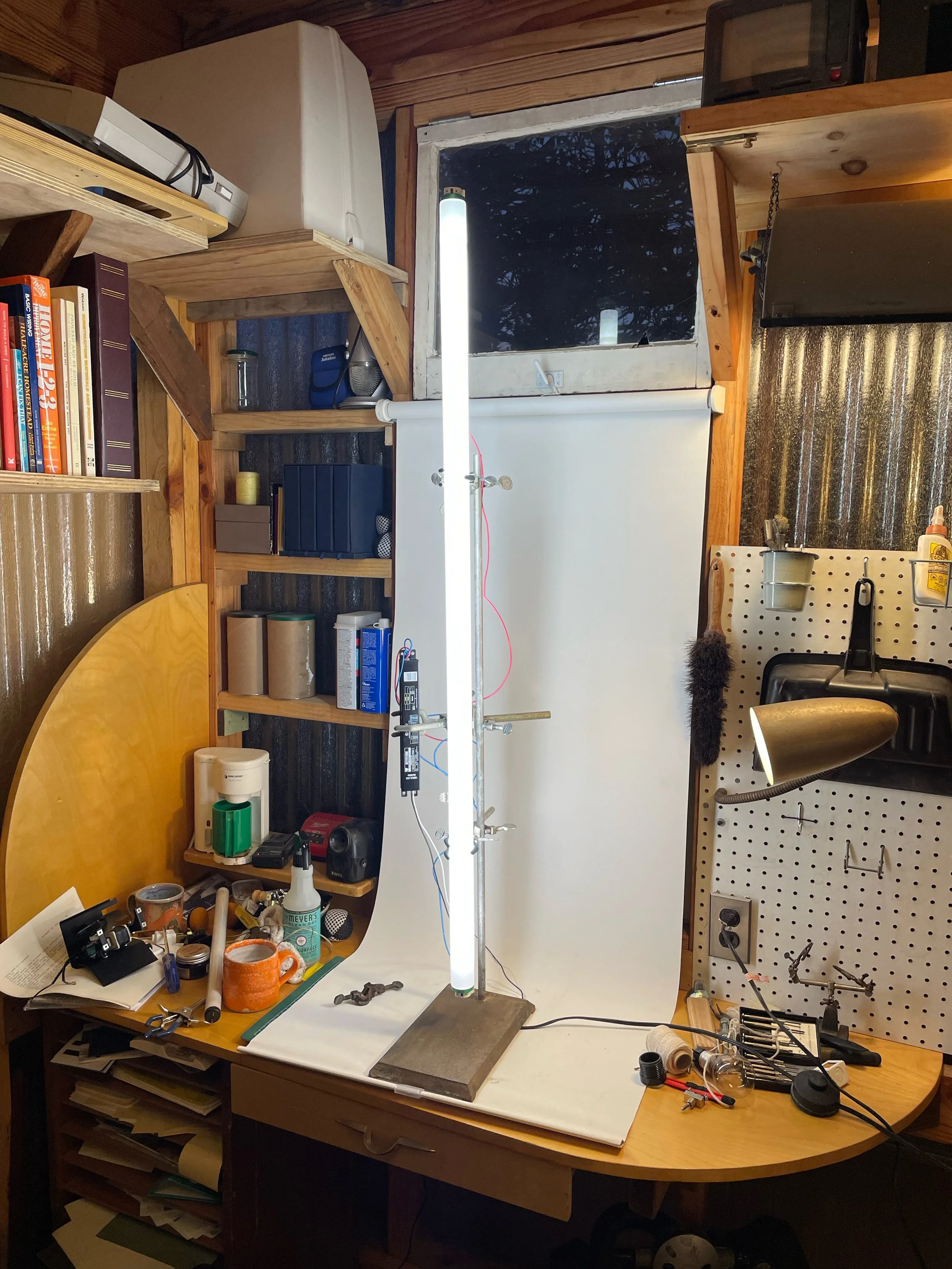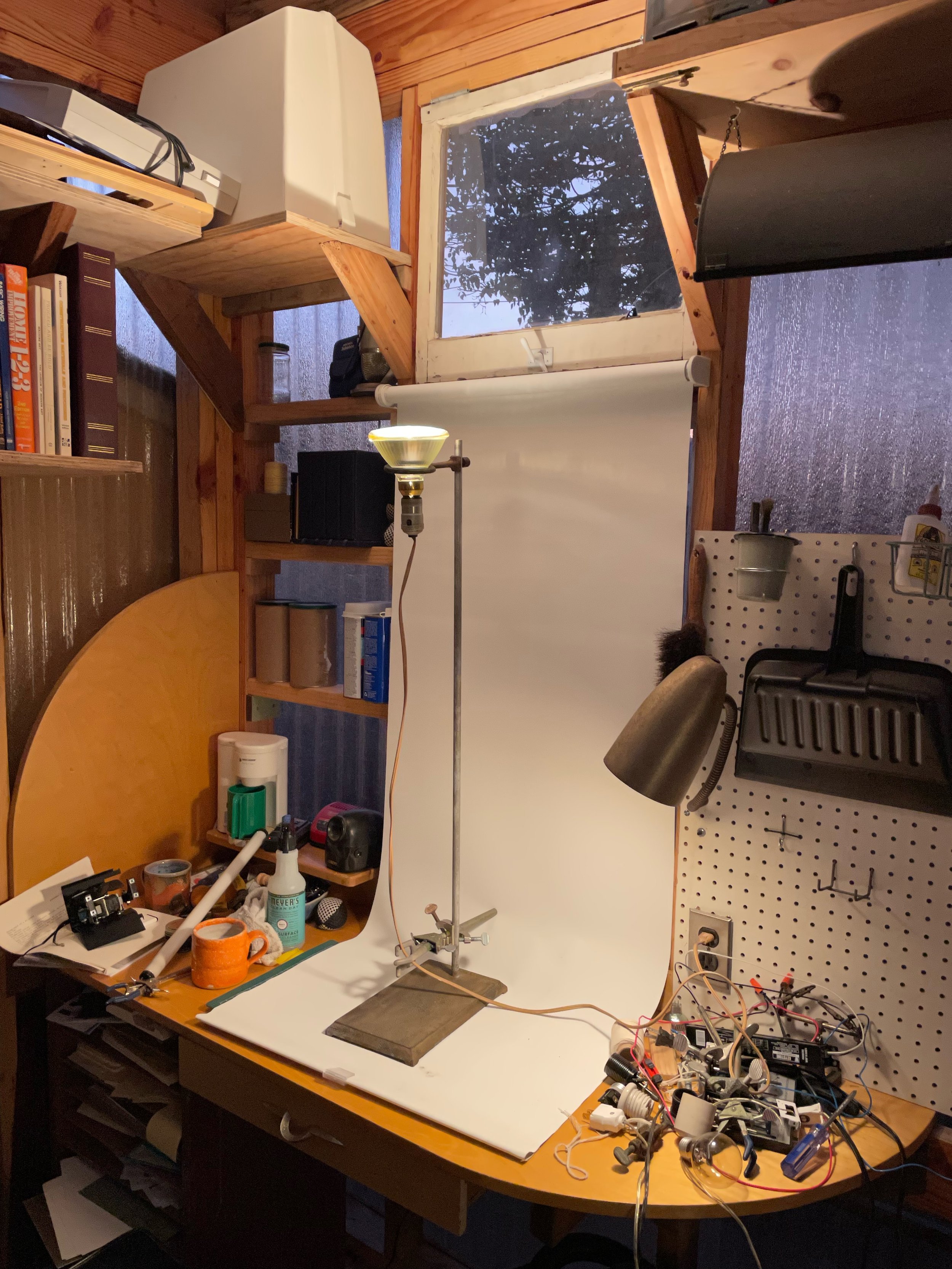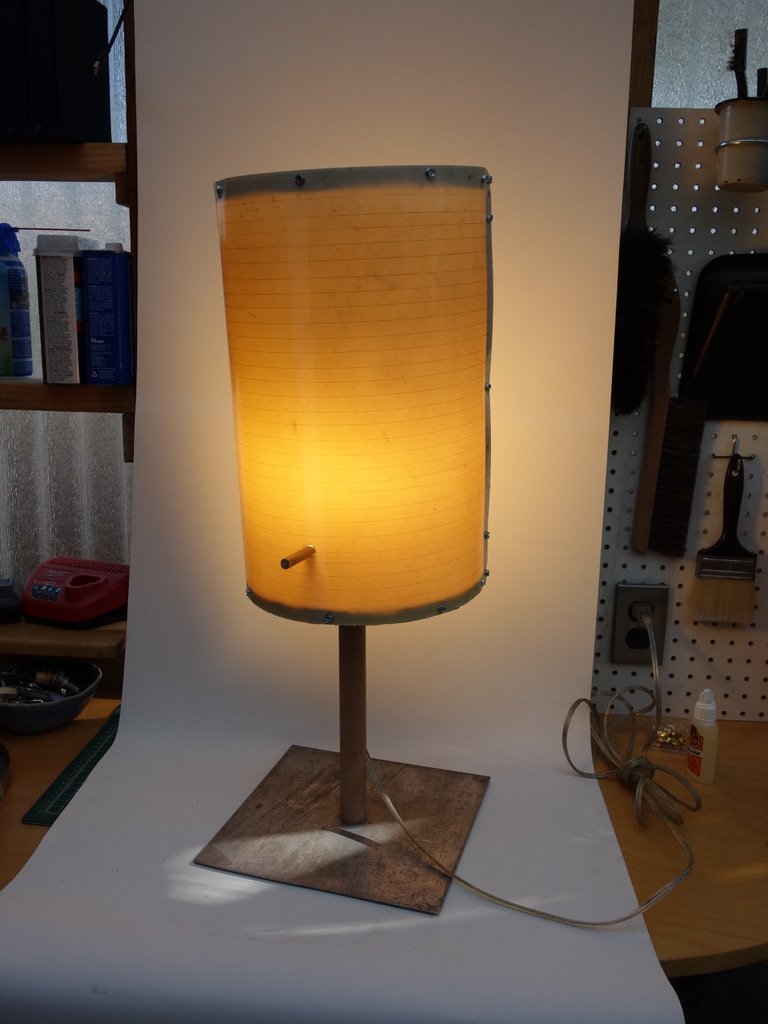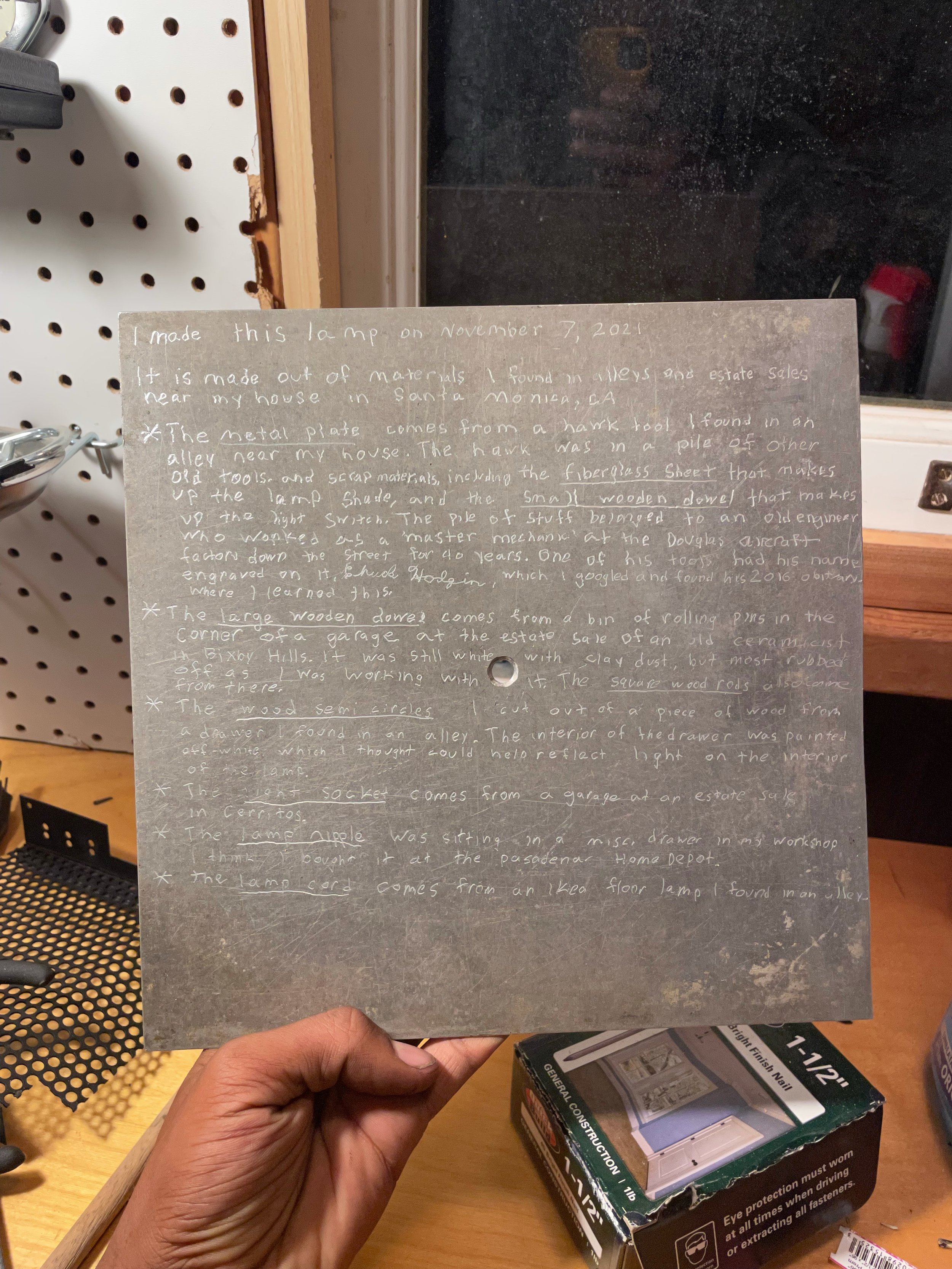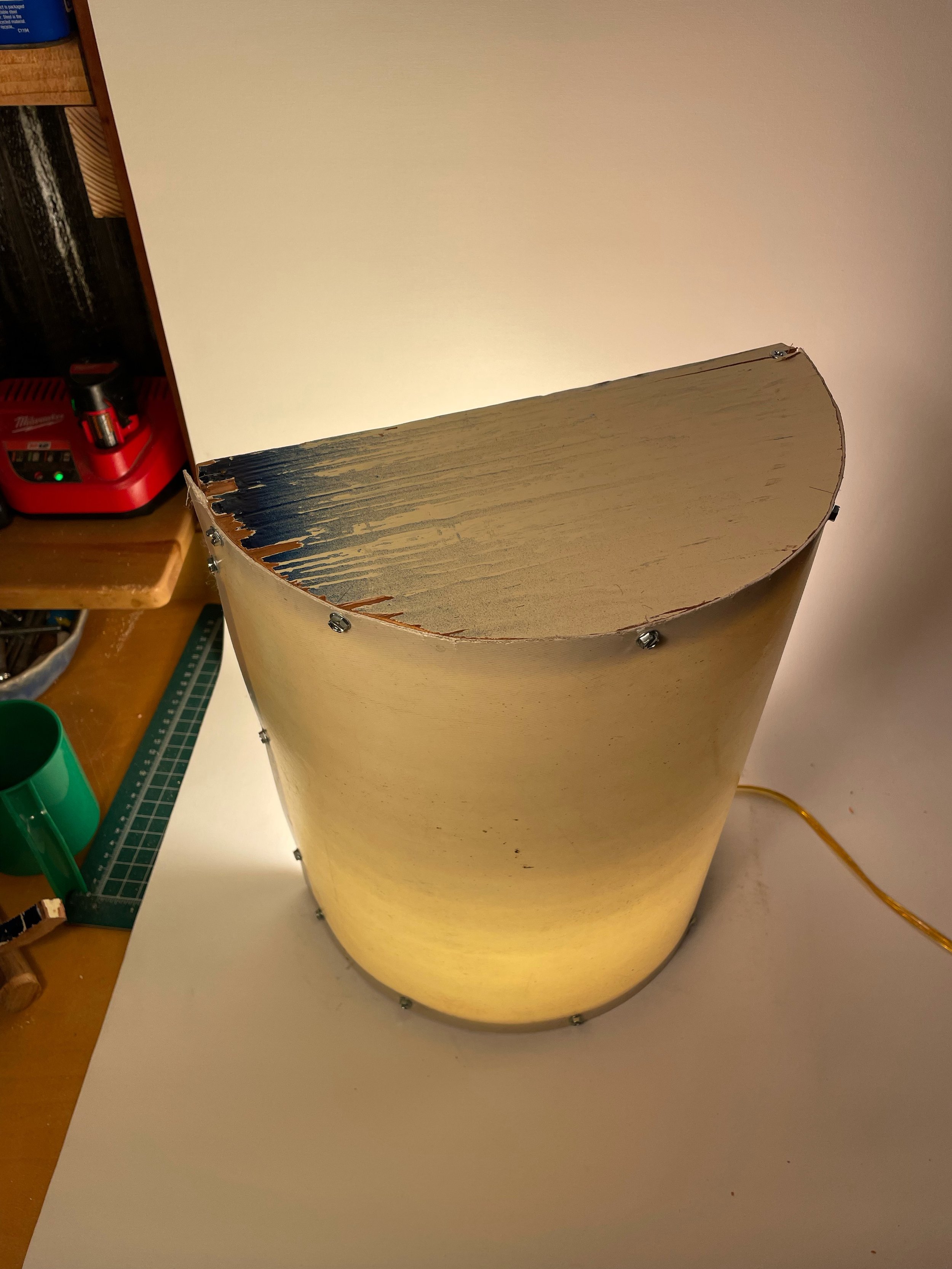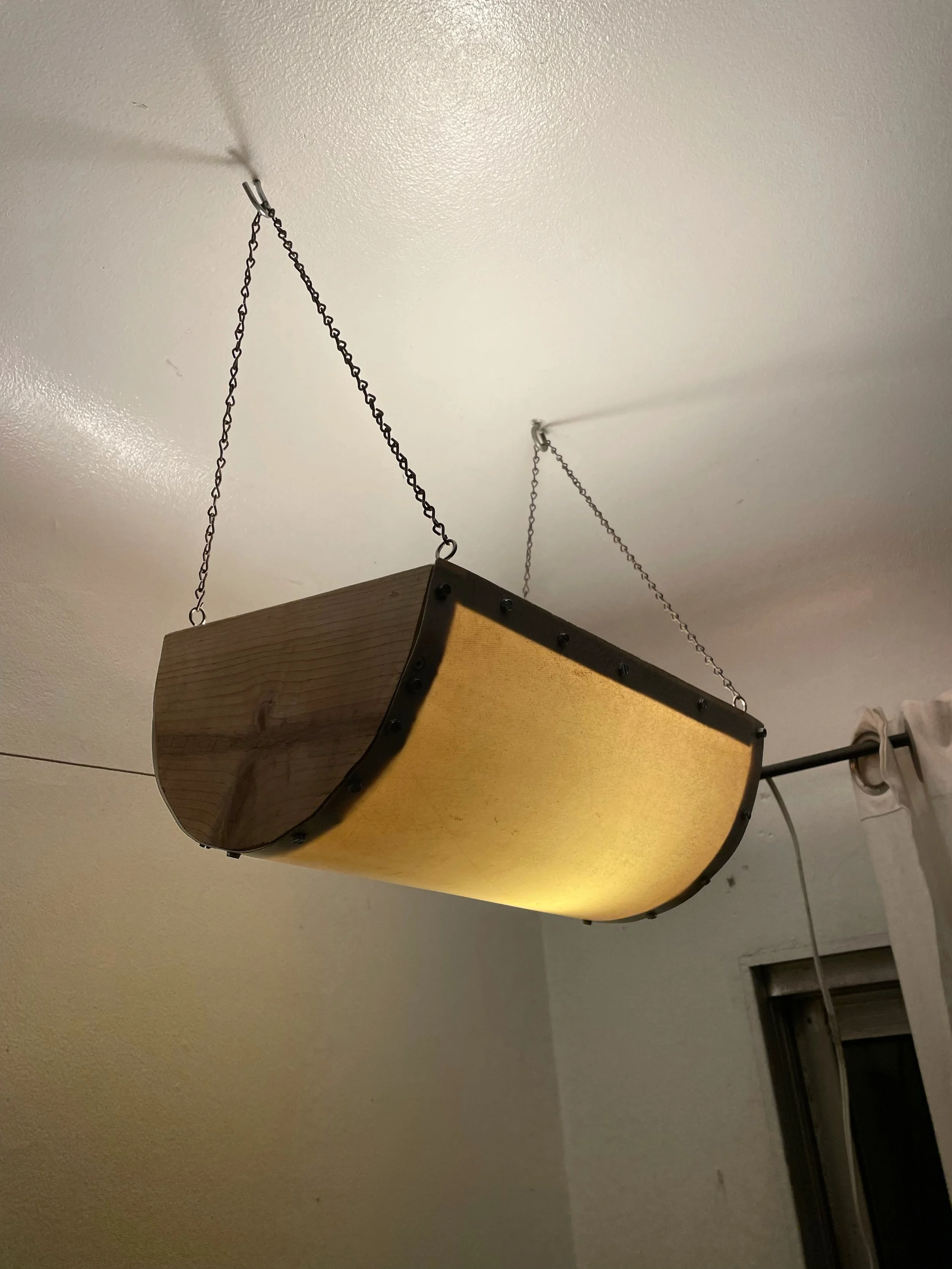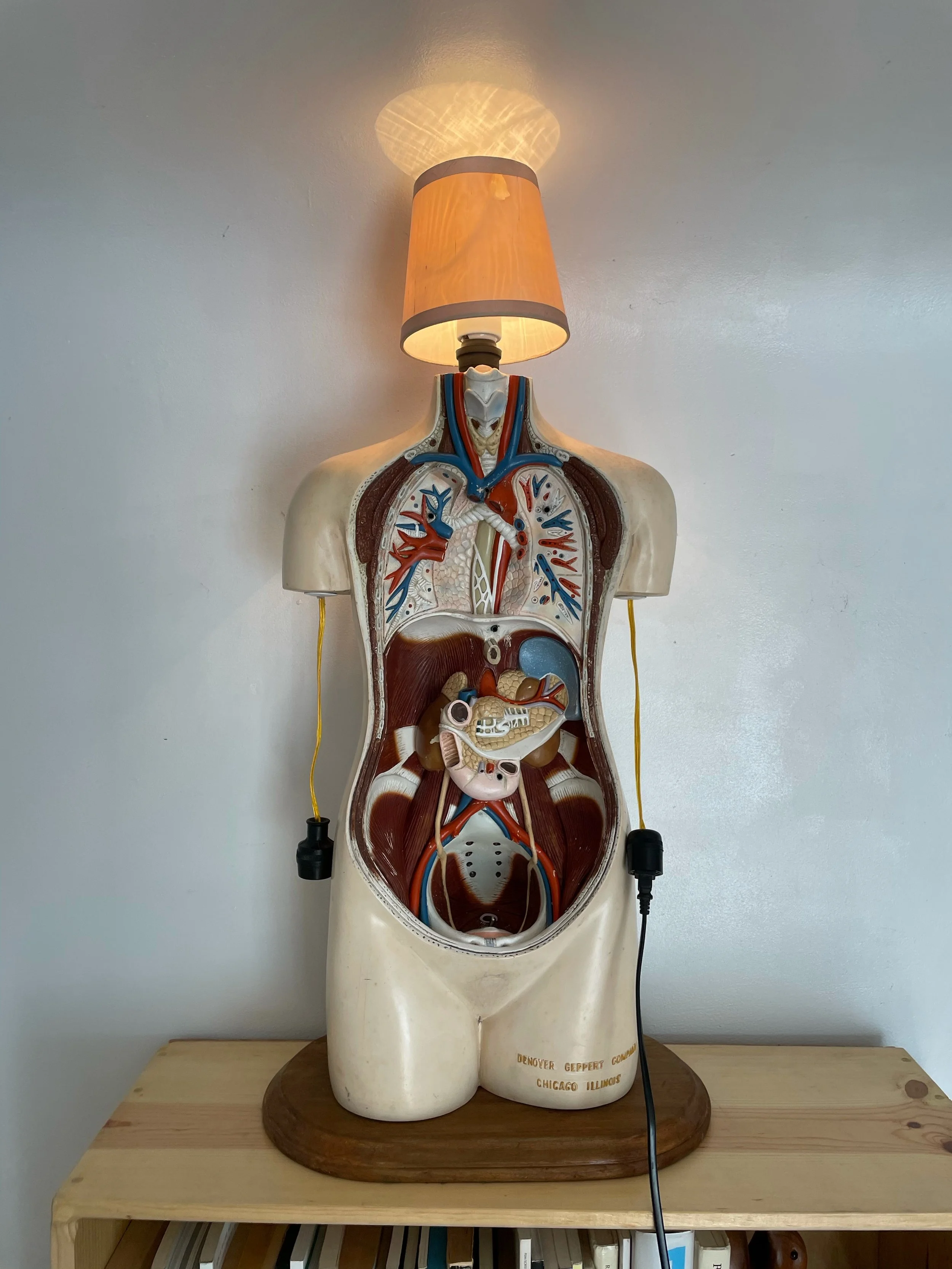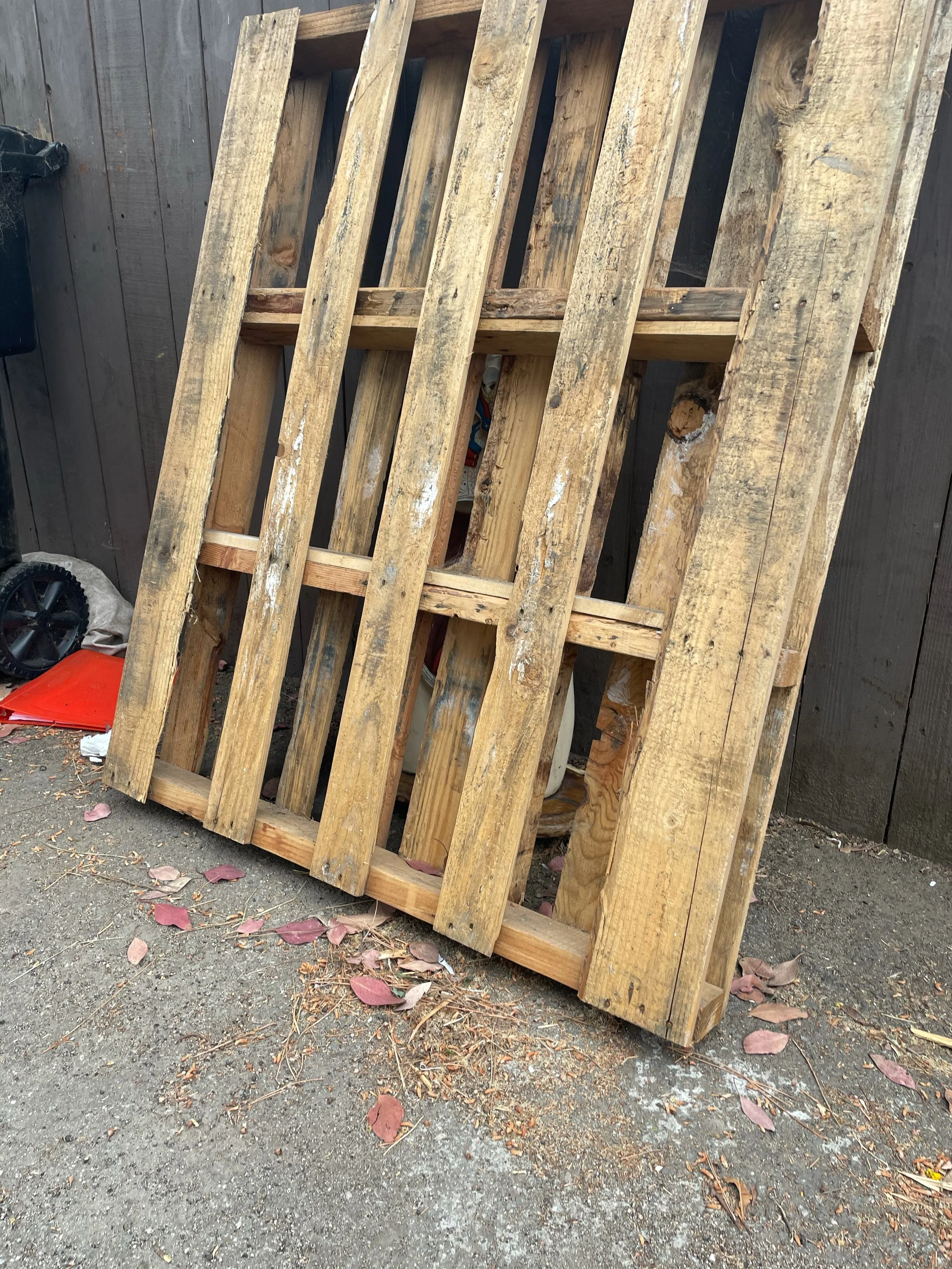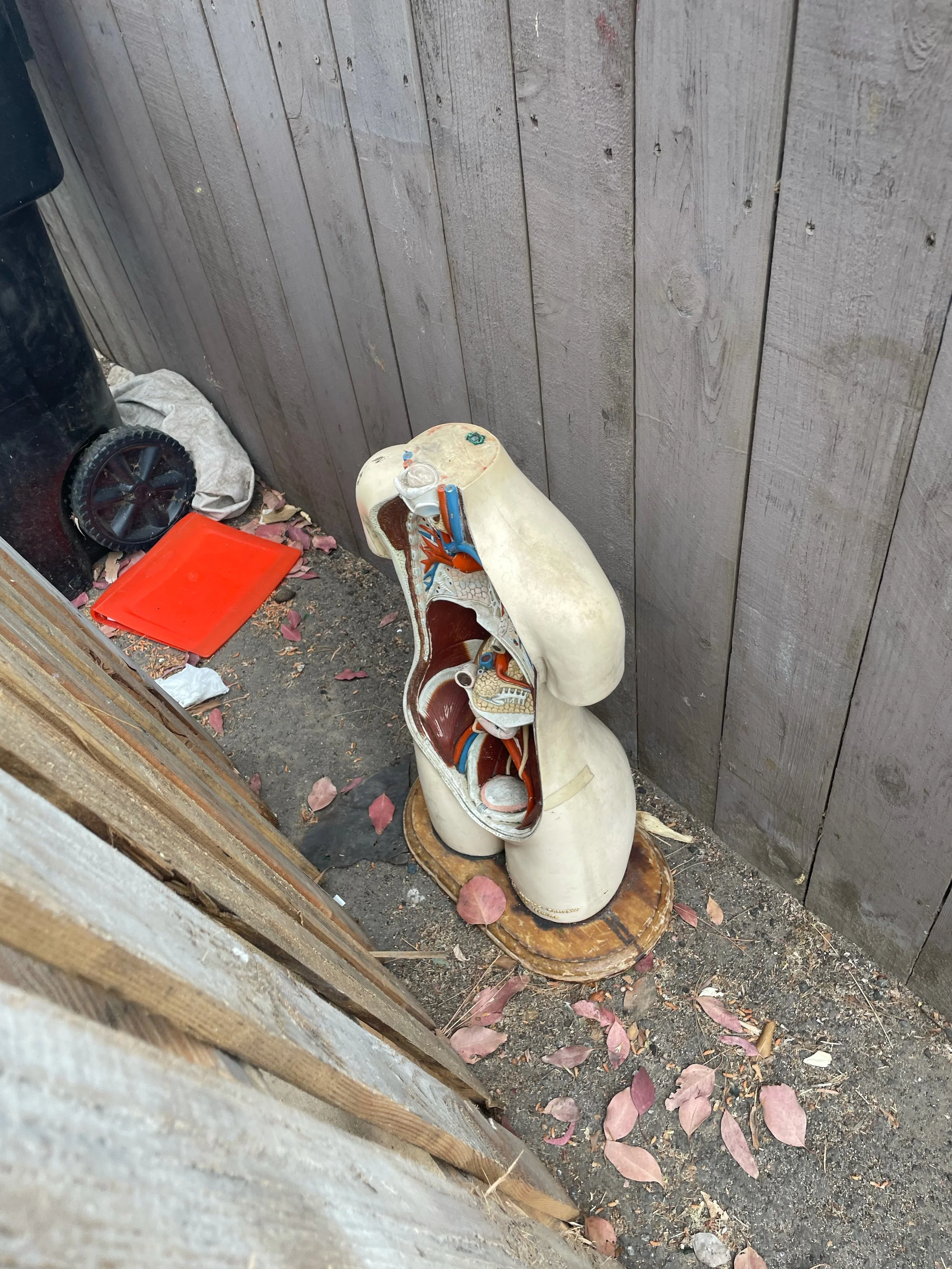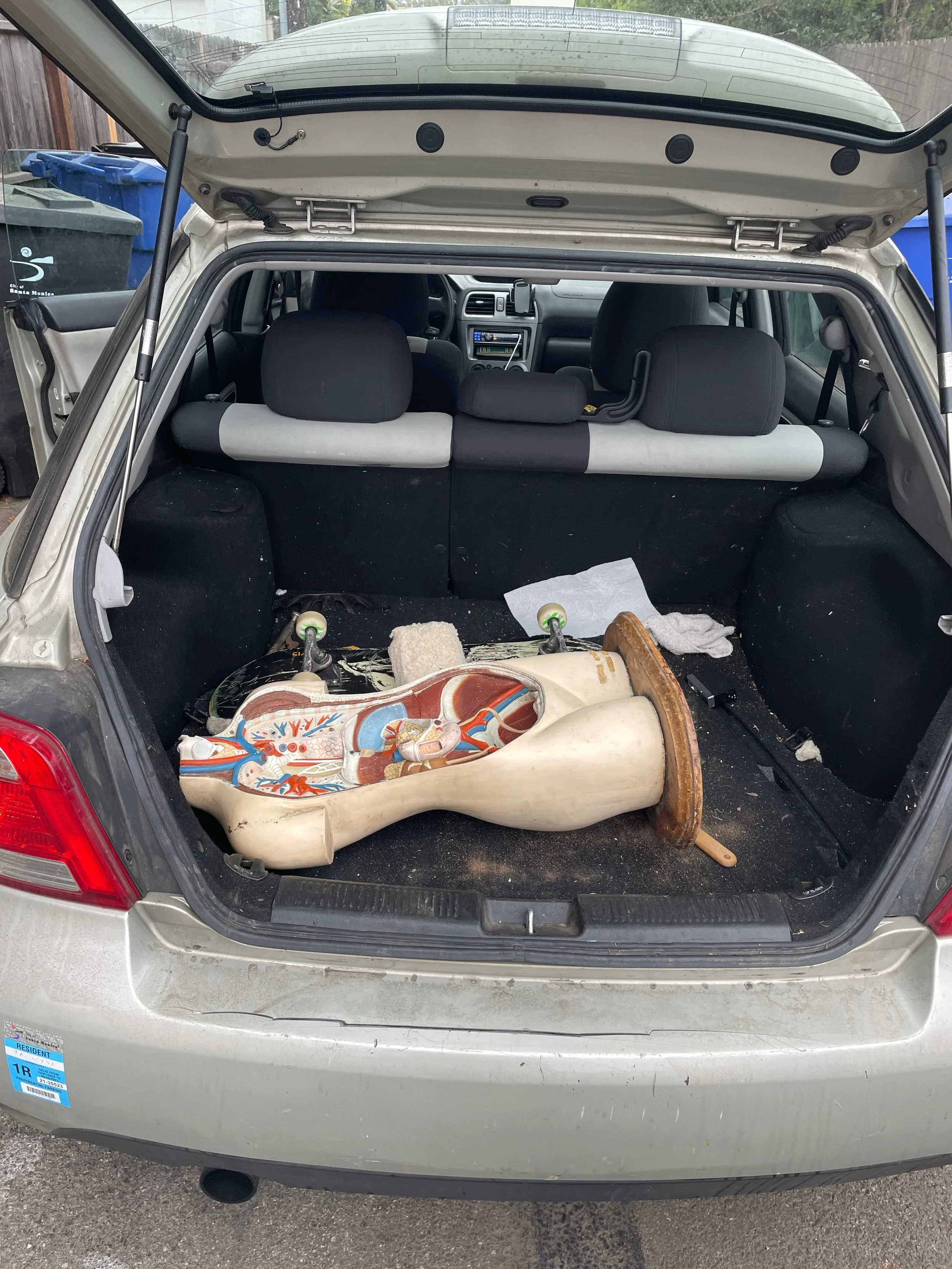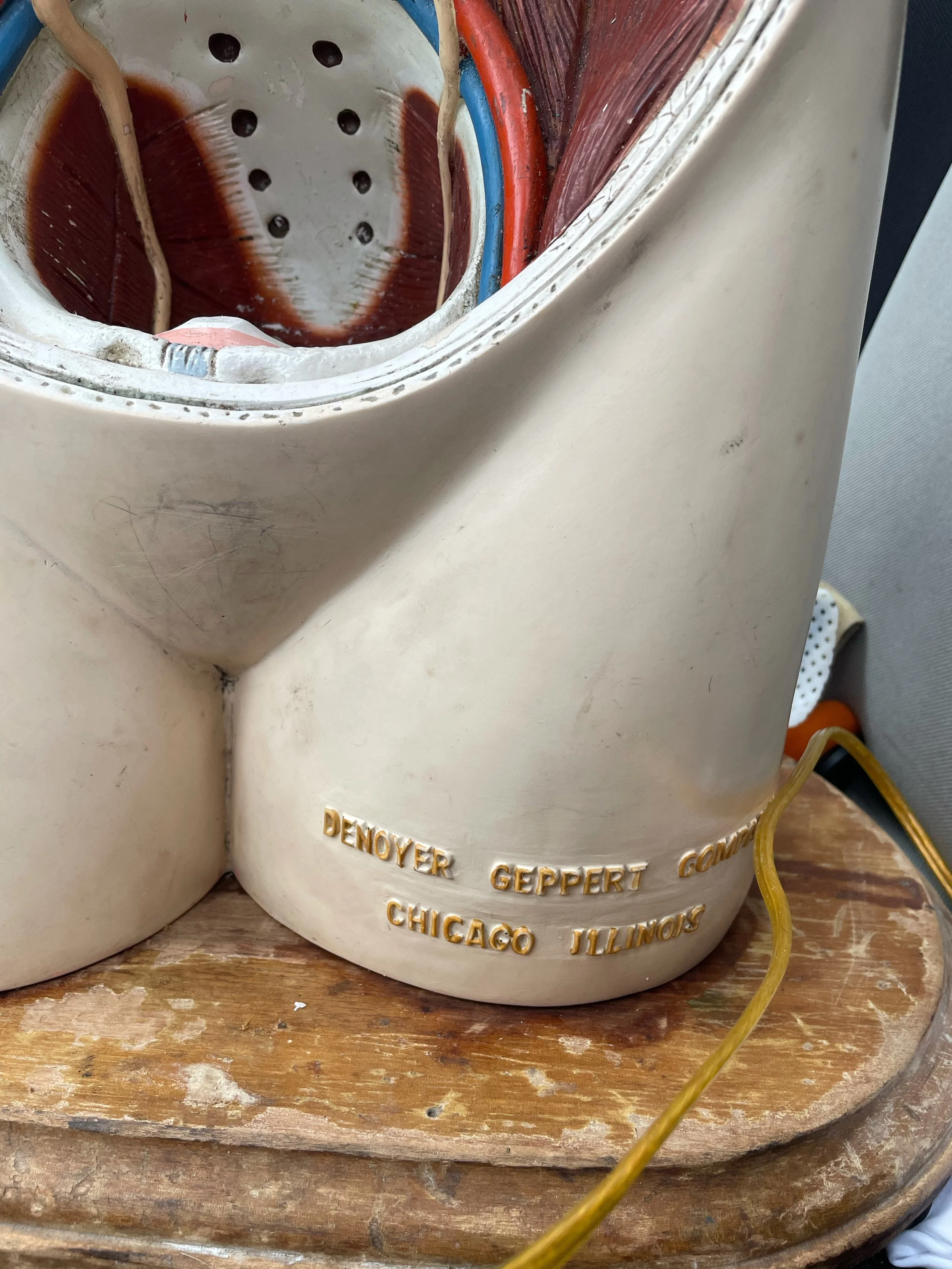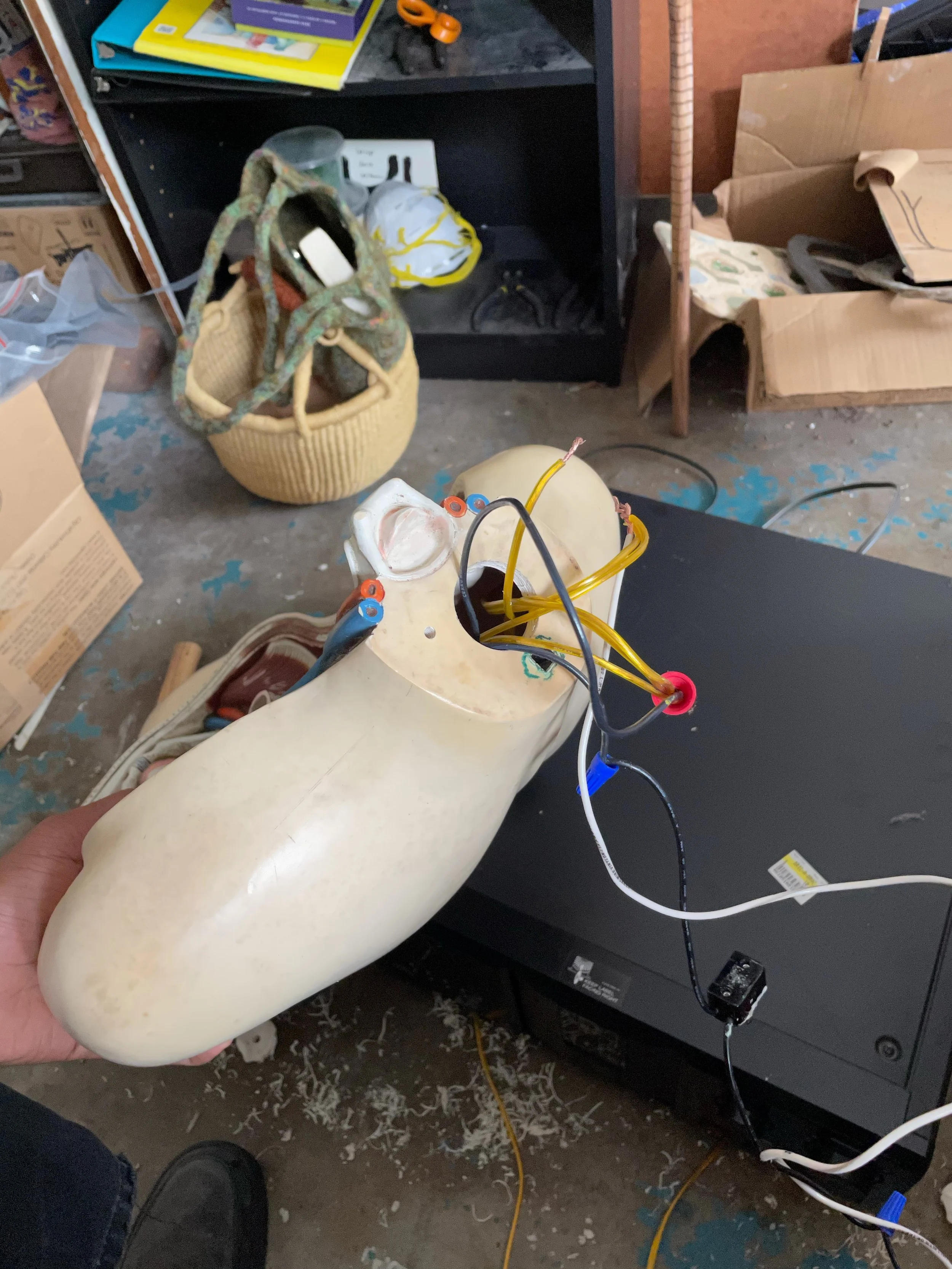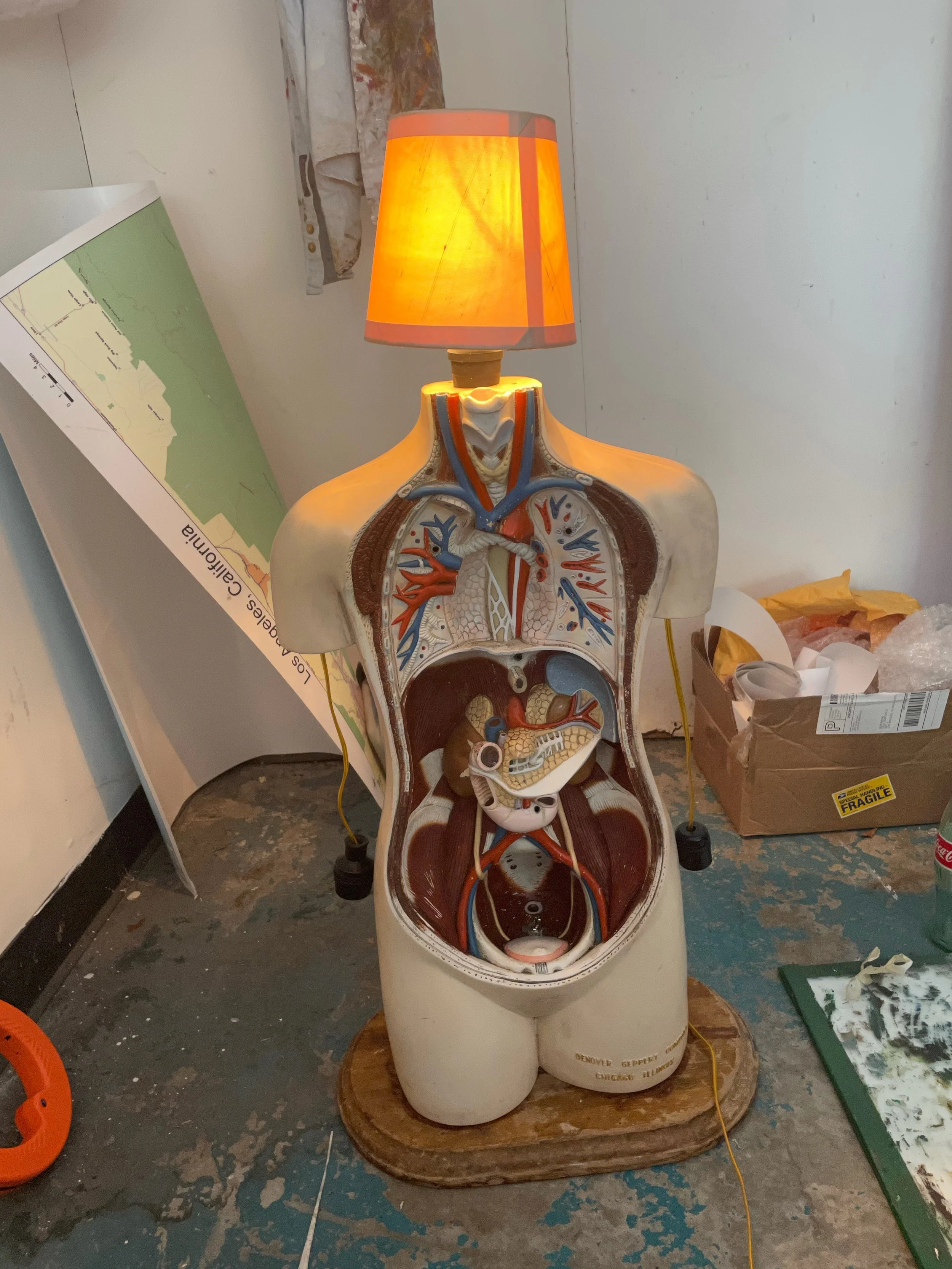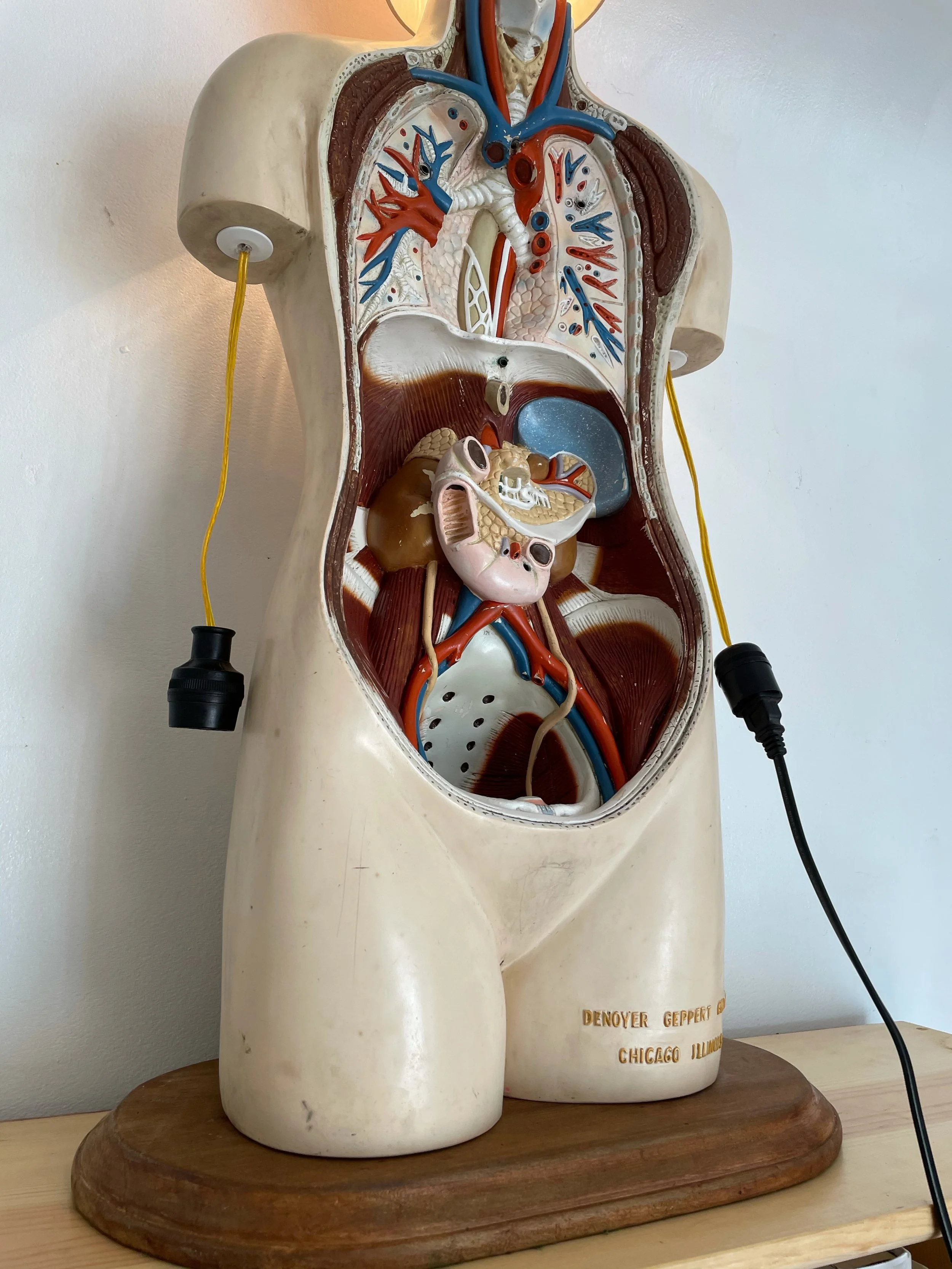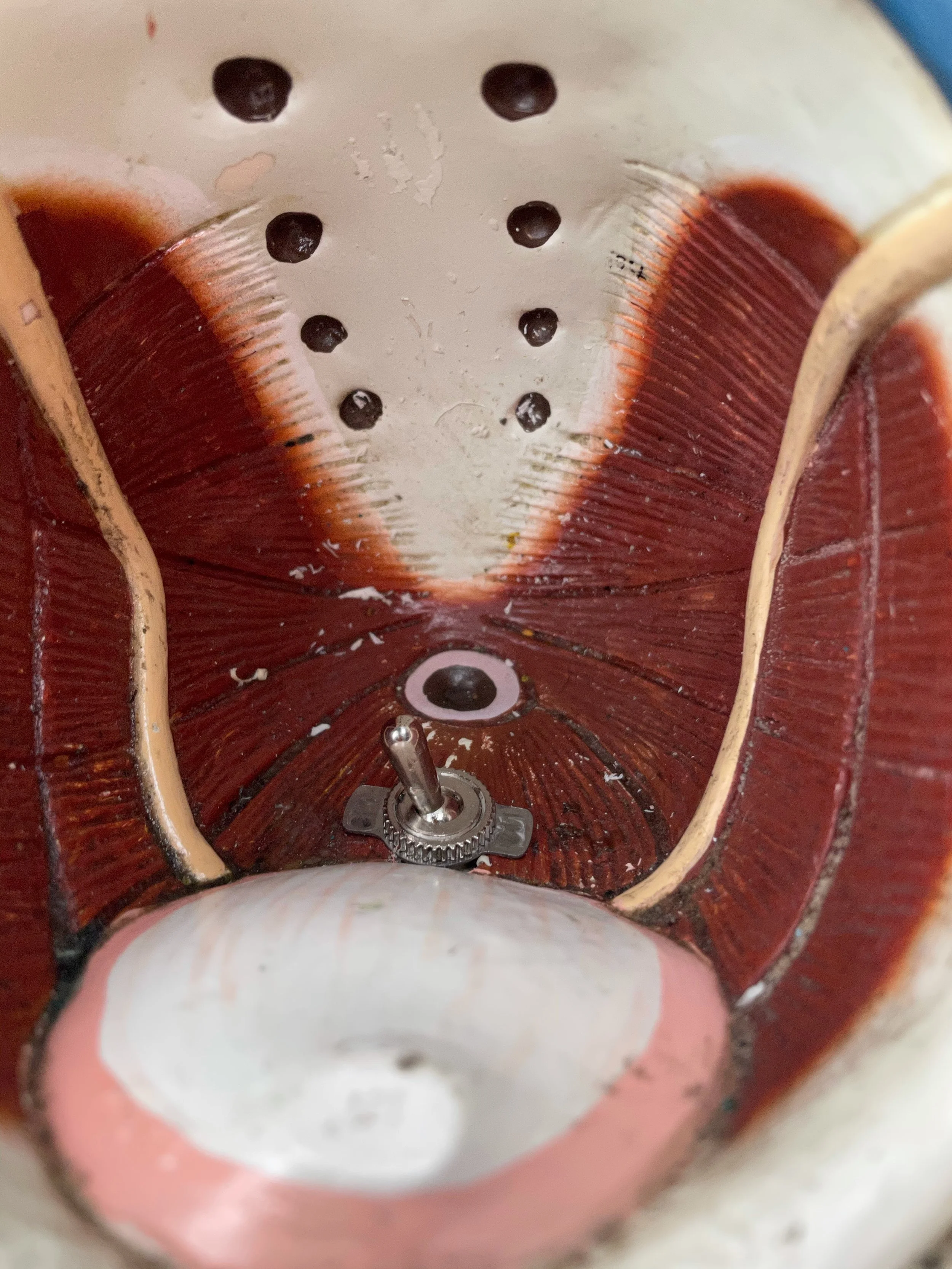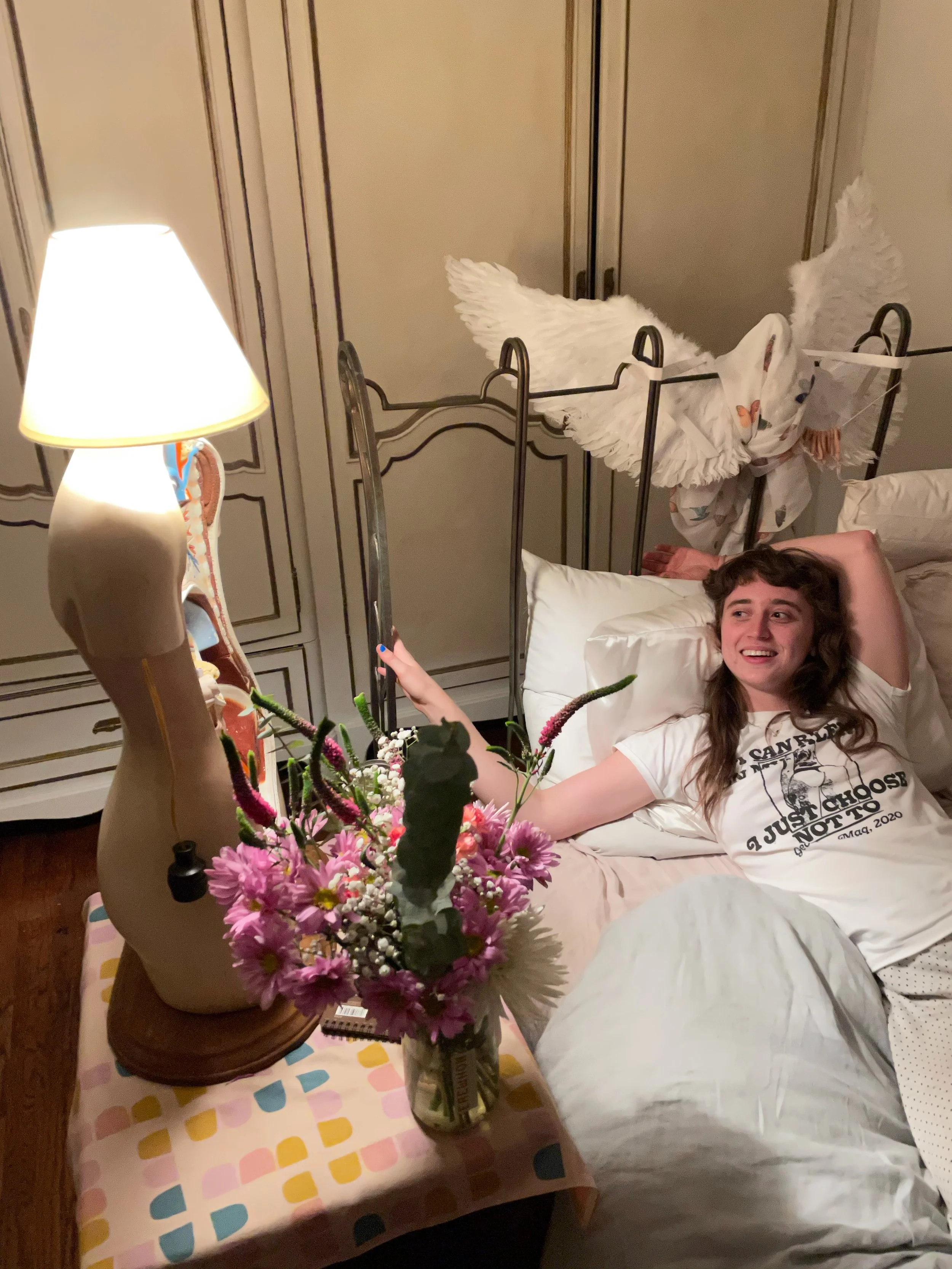I made three lamps in Swansea, CA, the ghost town on the Owen’s Lake I am staying at while serving as caretaker at the CLUI’s Owen’s Lake Land Observatory. There is a bunch of junk scattered around the property (scrap wood, scrap metal, old appliances) from the previous owners. The caretaker’s house on the property, where I stay, dates back to the 1860s.
Using scrap materials found only on the property, I made this lamp for the bedside table in the house.
To make the lamps, I found an old panel of corrugated fiberglass roofing and cut the flat sections into strips.
And next I found an old wooden countertop and sanded it down and cut it into pieces for each lamp.
The lamp originally used three fiberglass panels, as seen here, but I decided it looked too much like a Wells-Fargo Carriage, so I took it apart and made it a bit skinnier.
